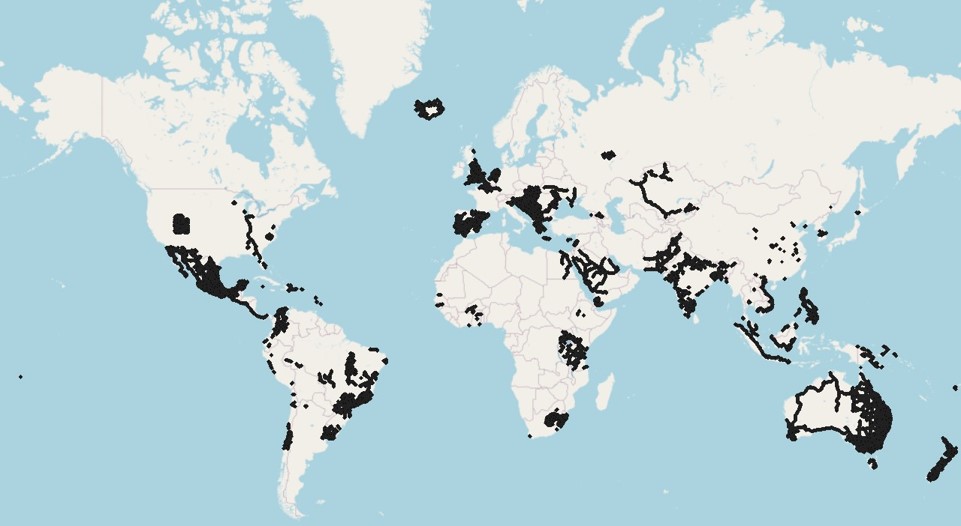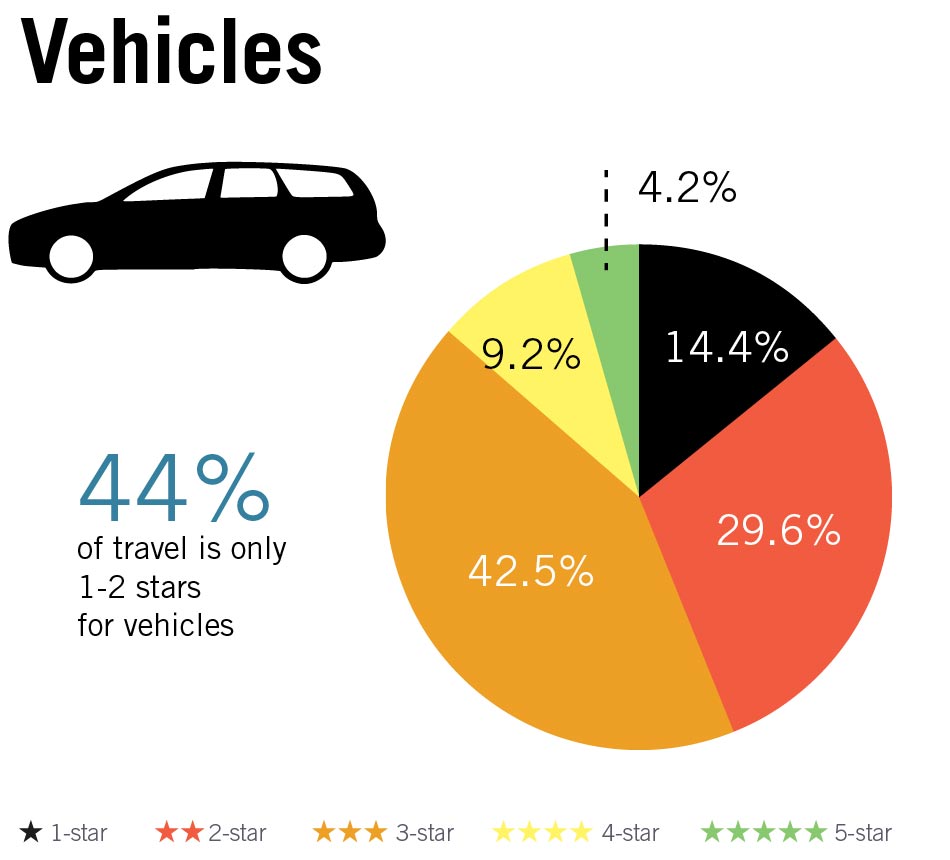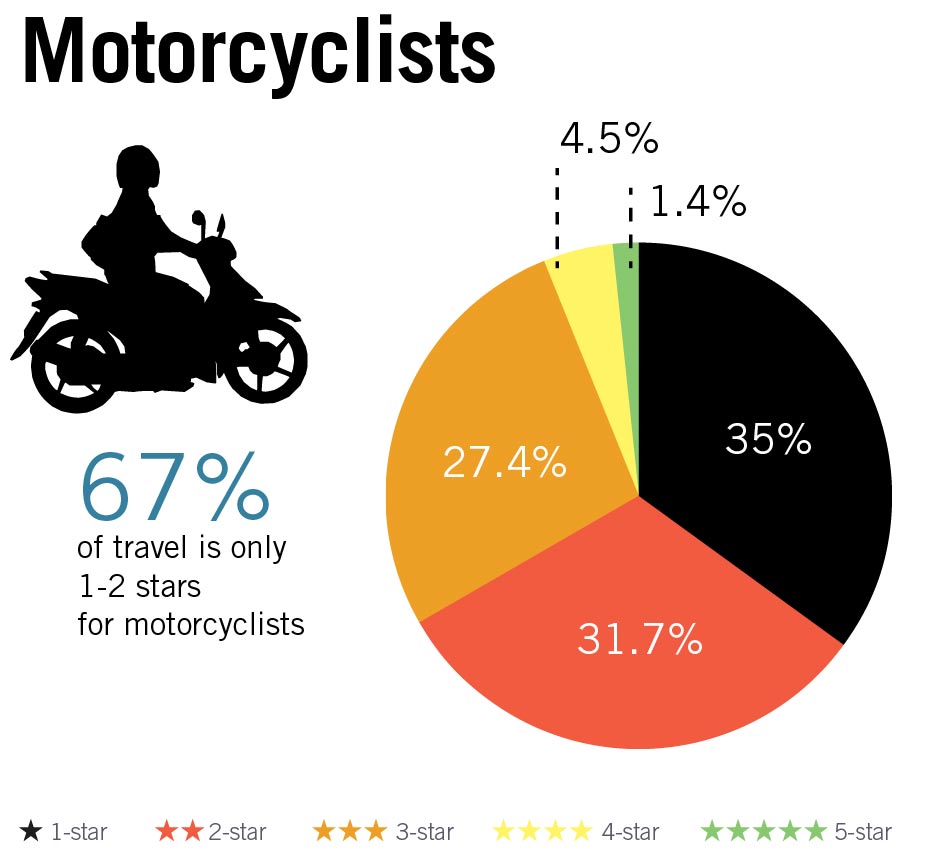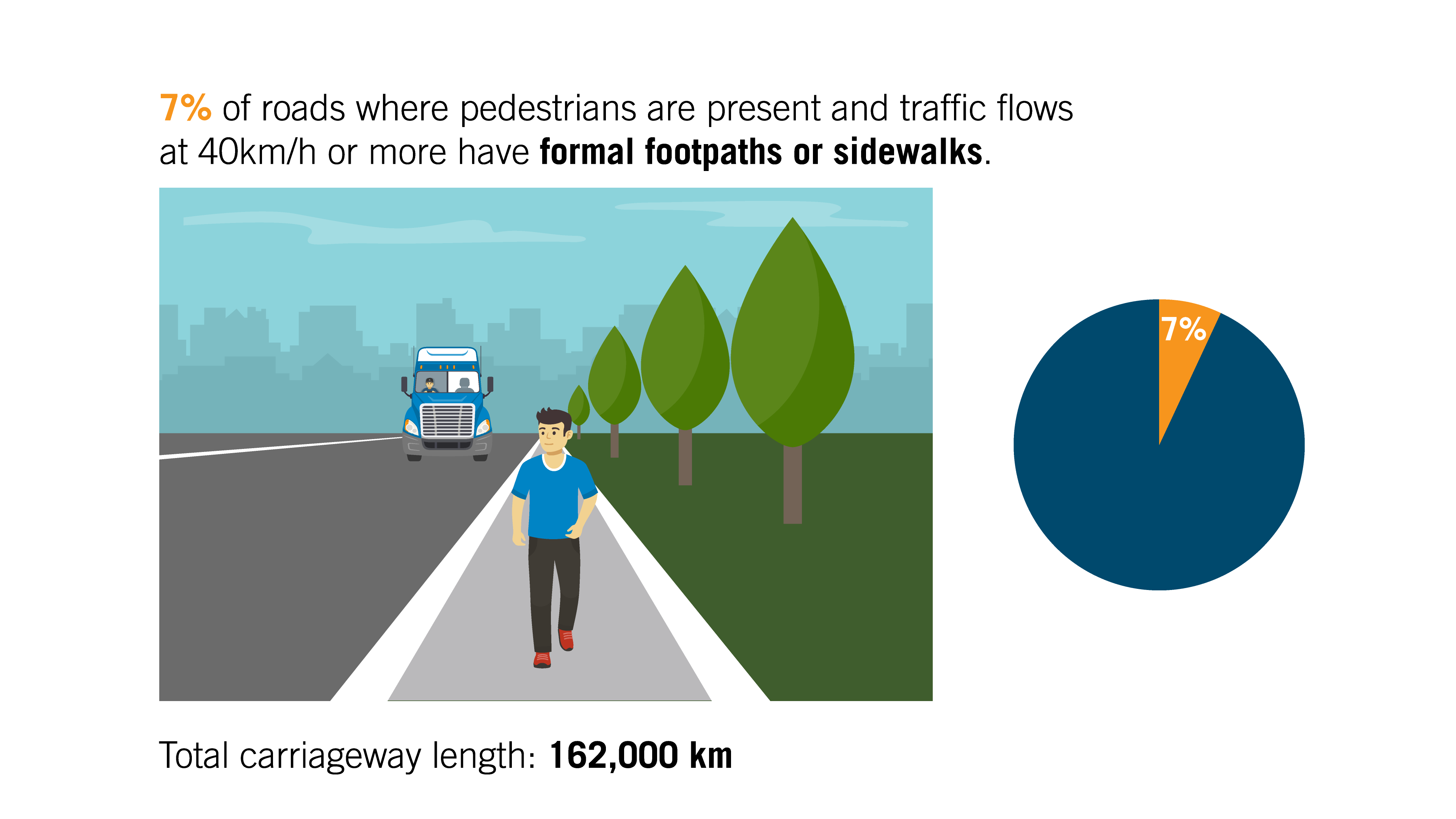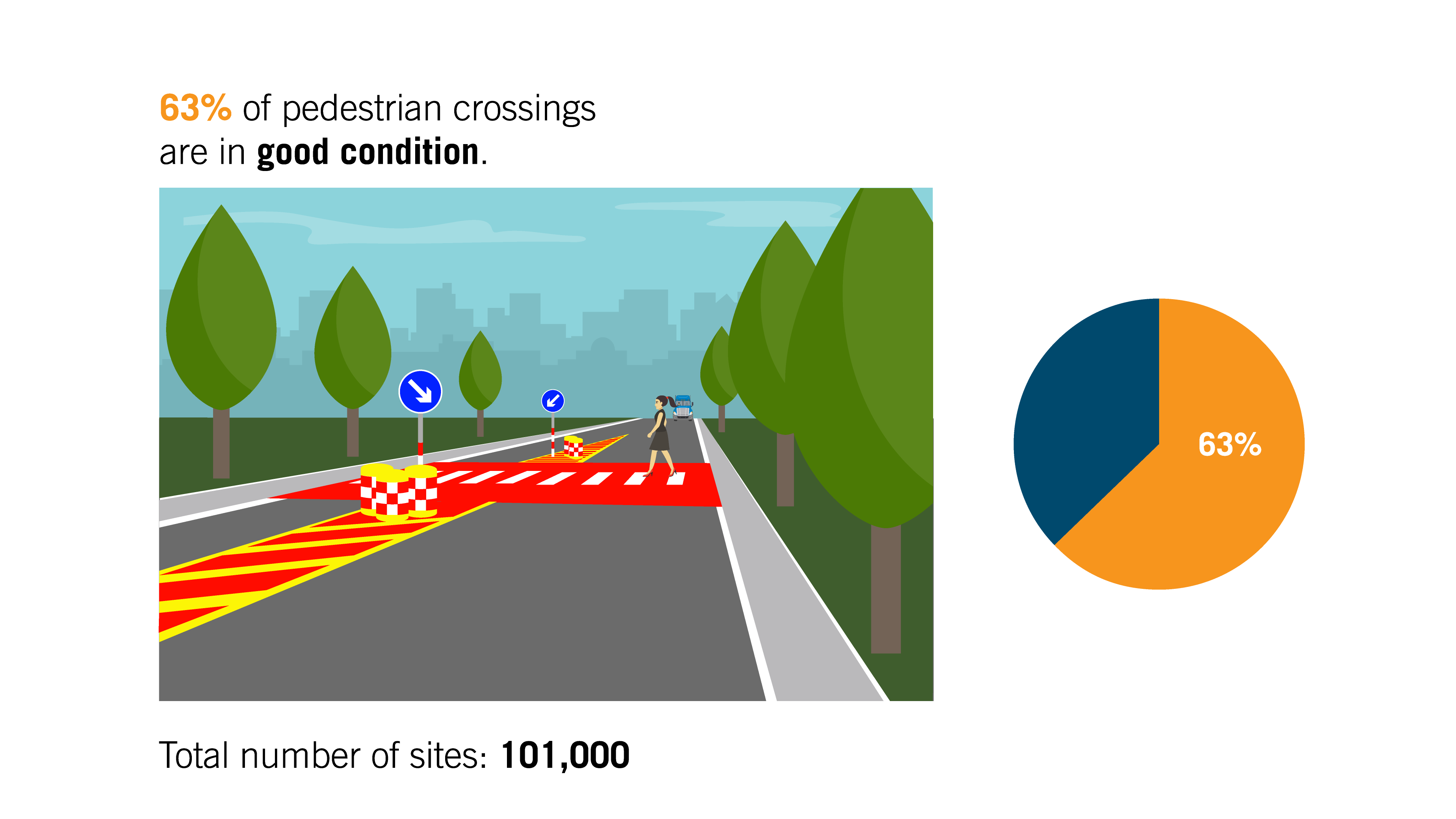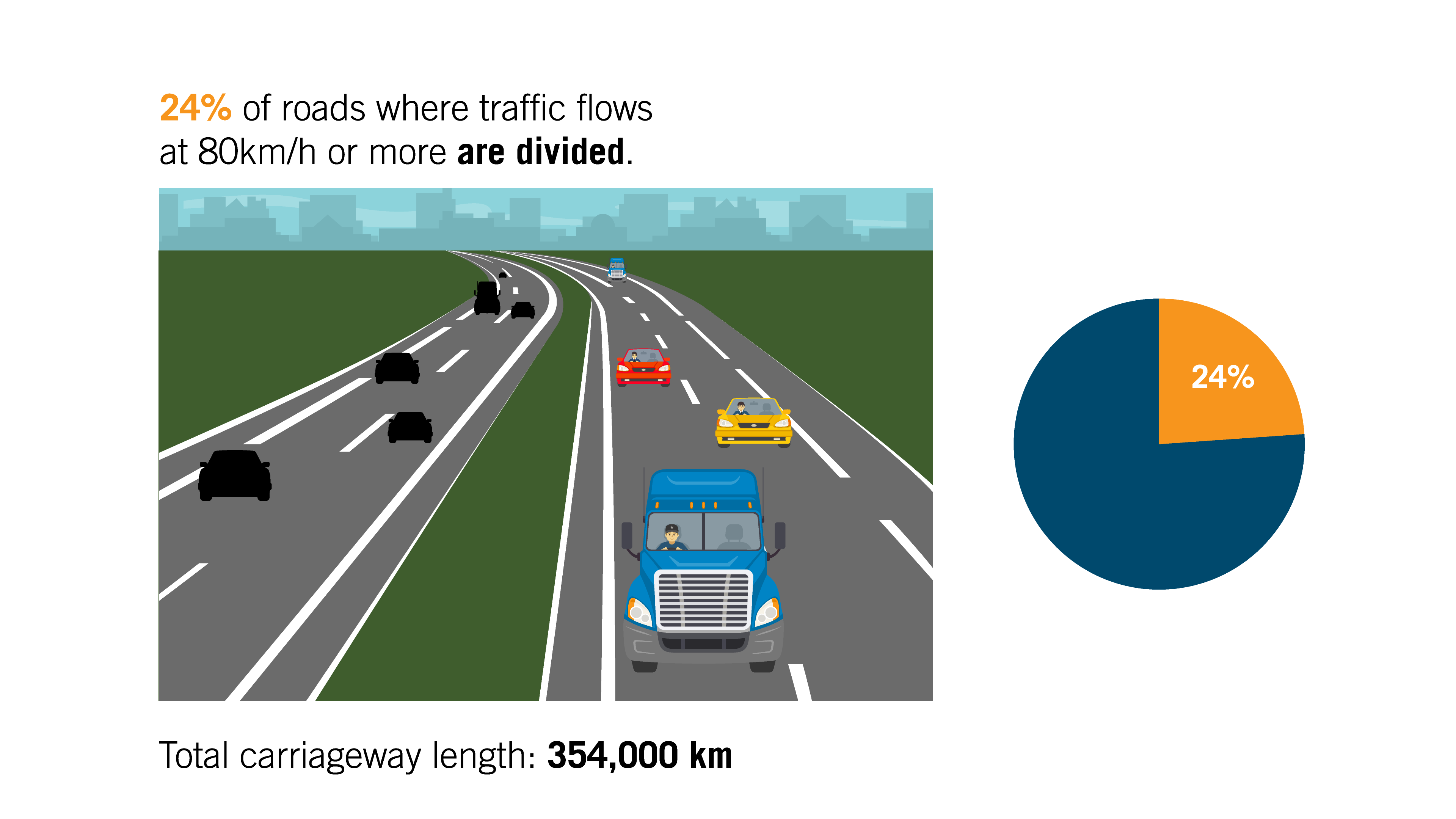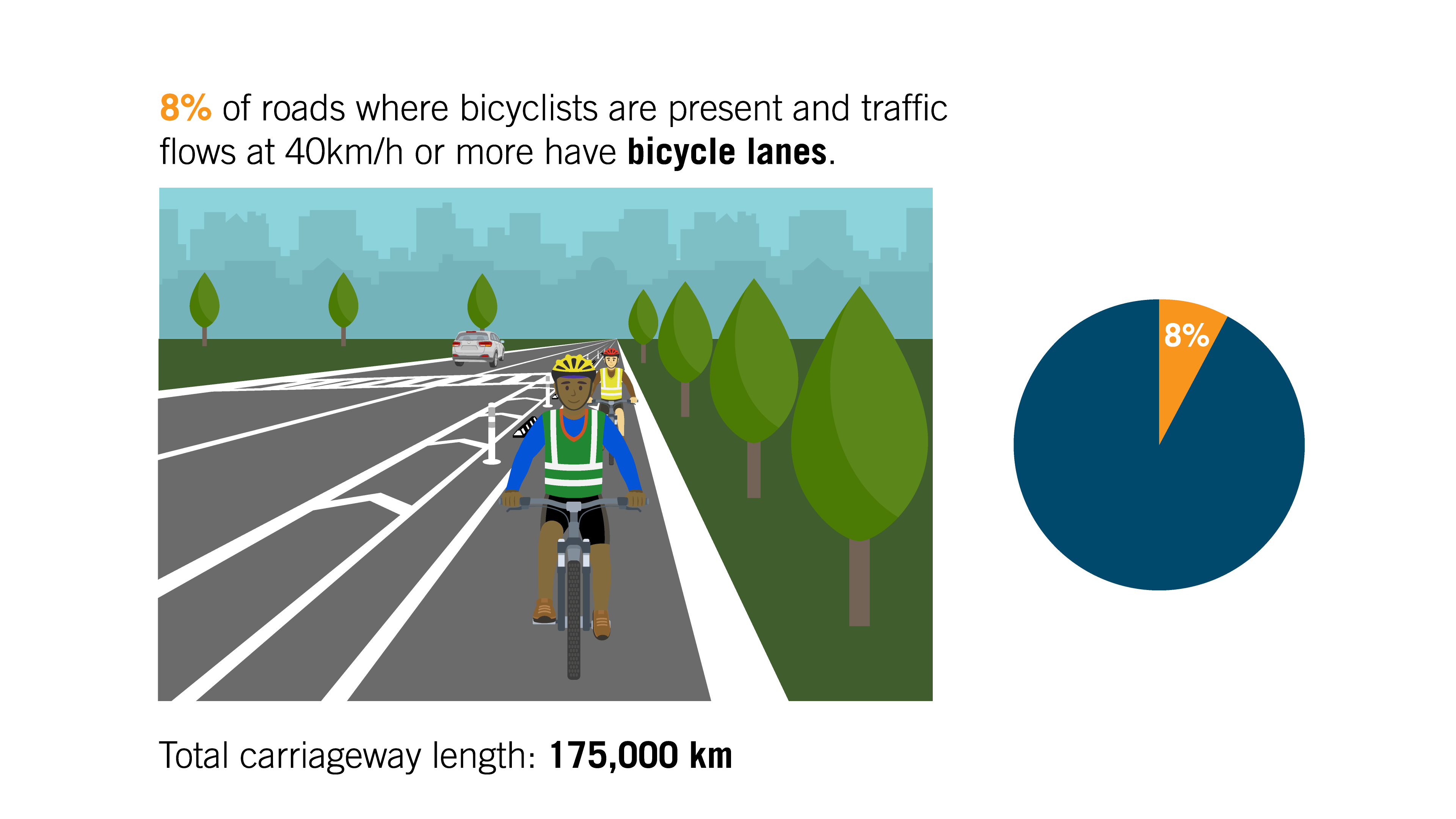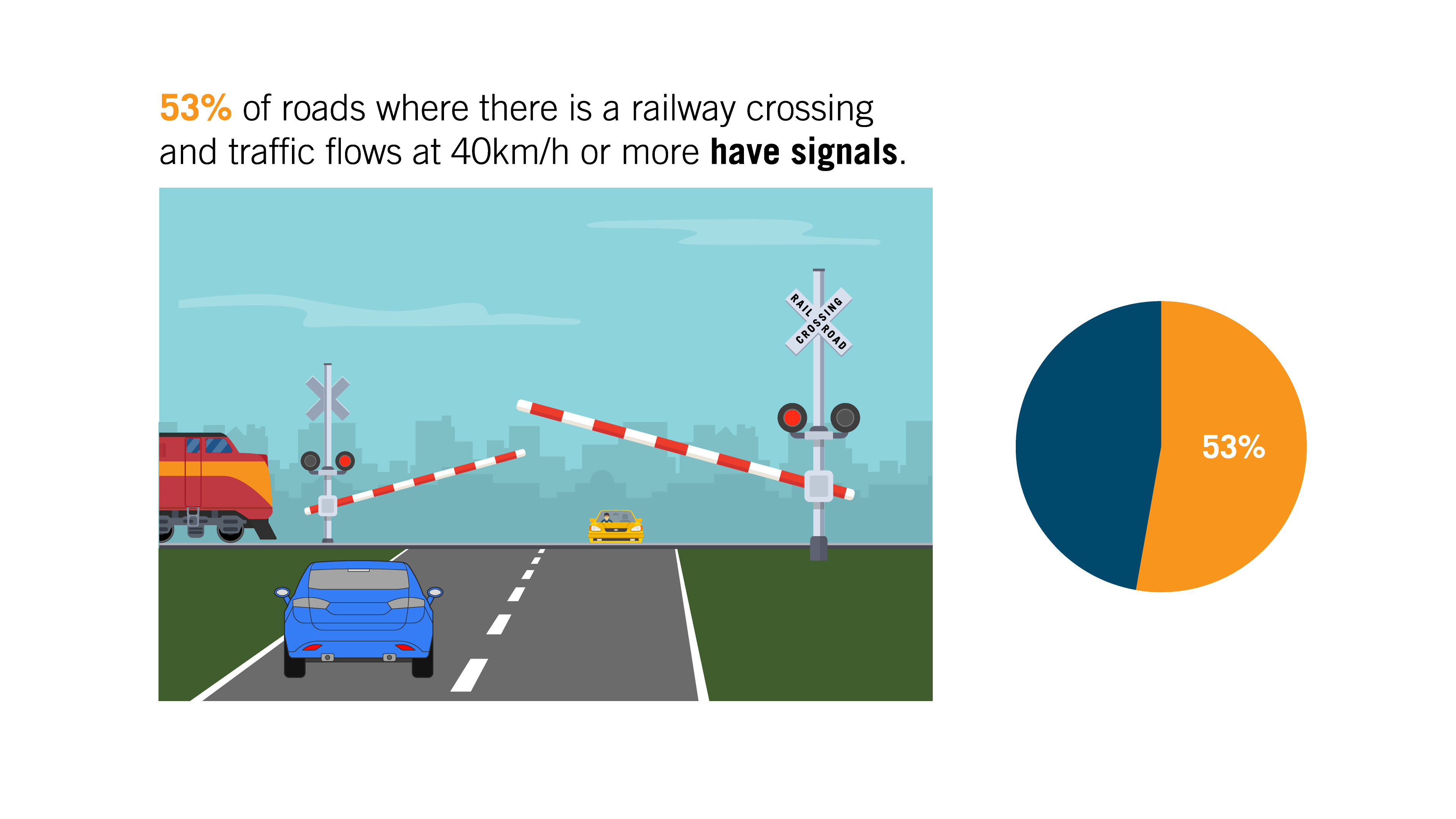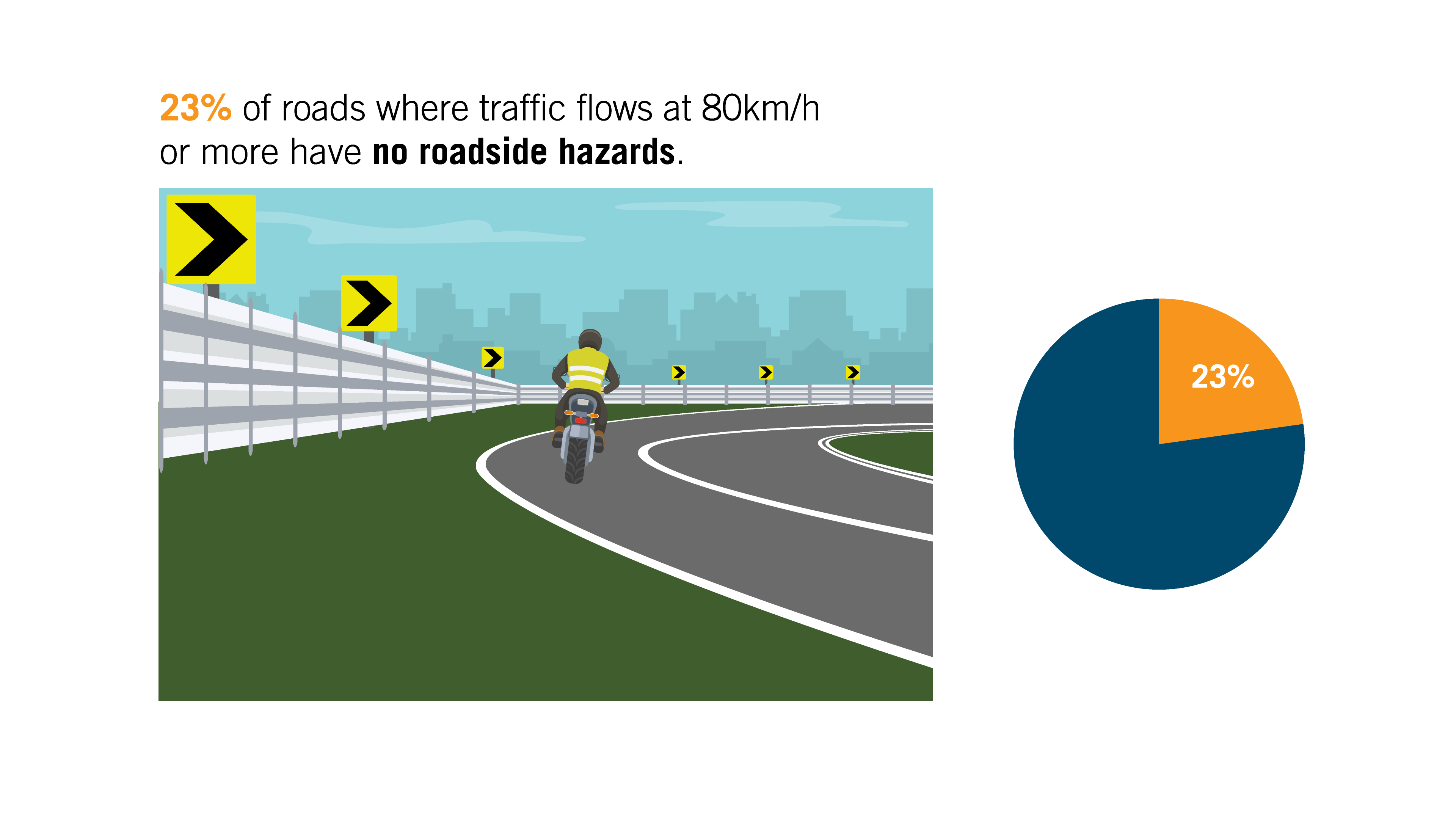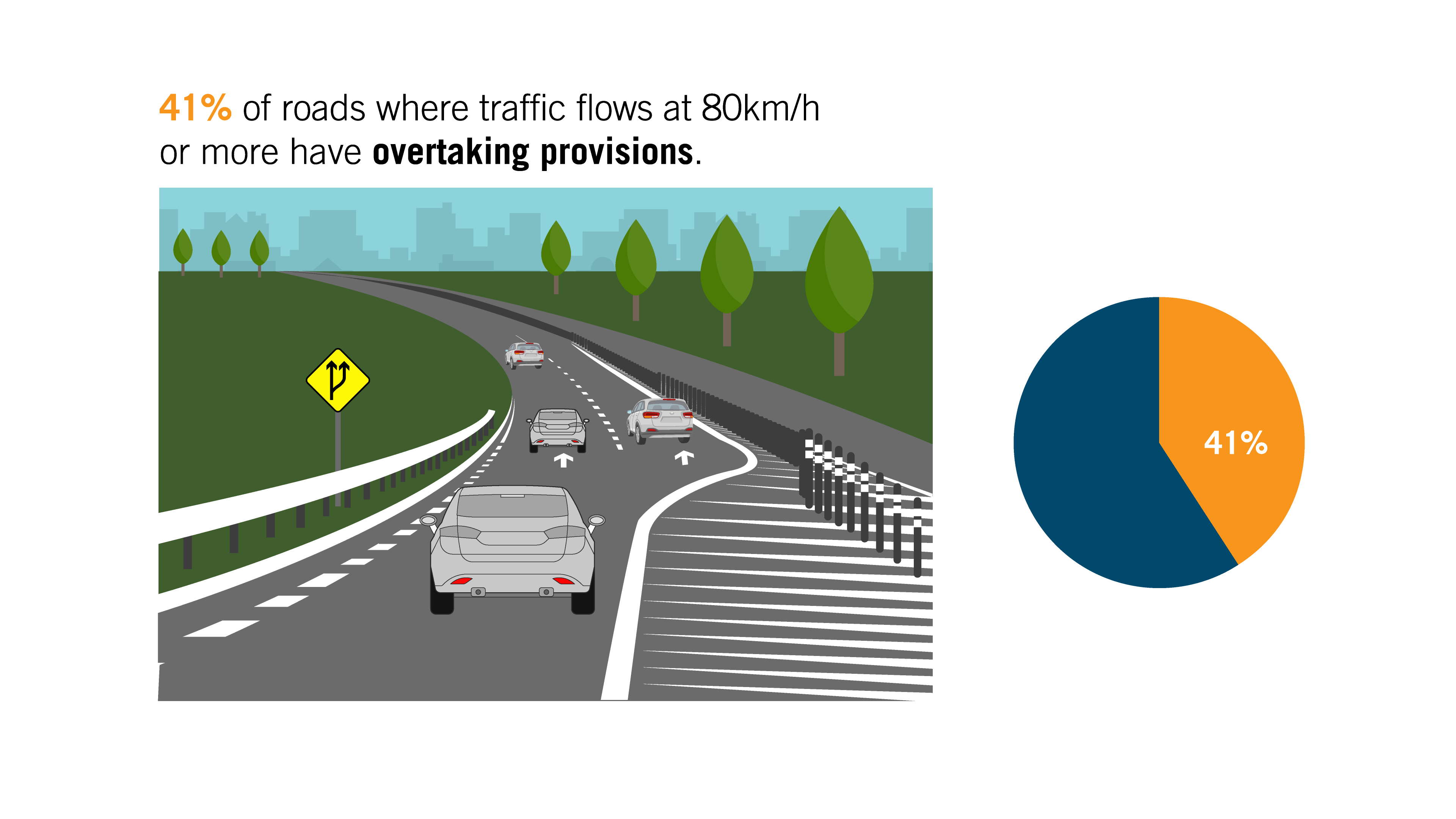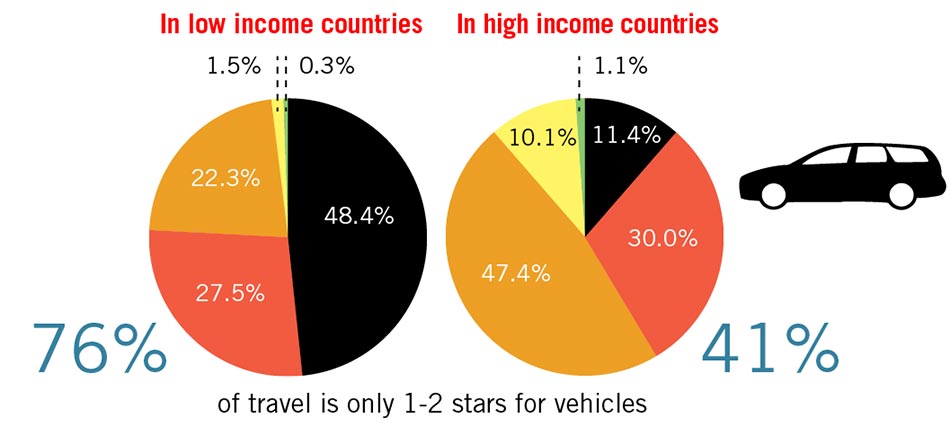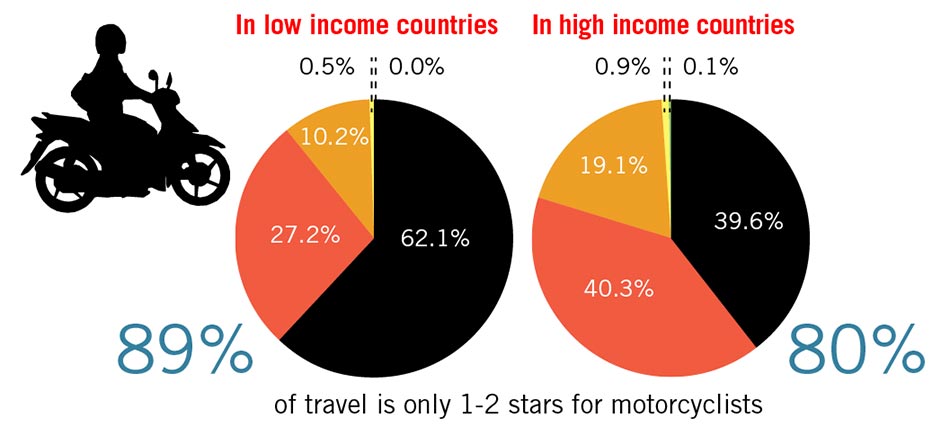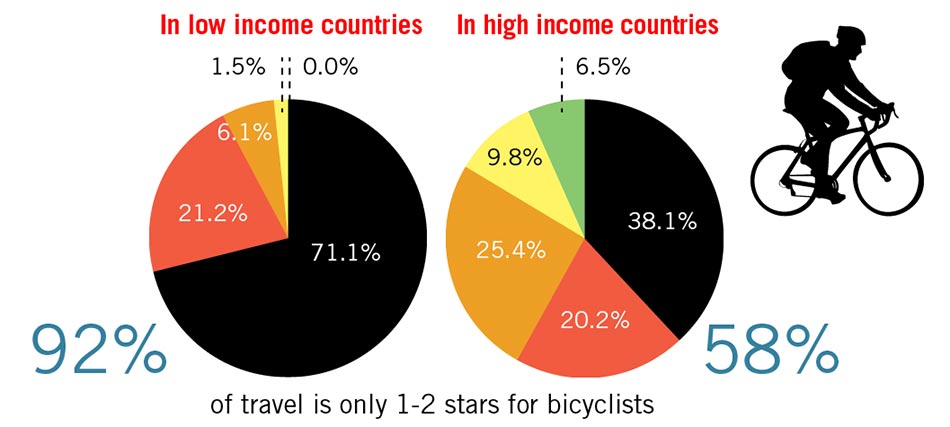
Road safety is critically important to the achievement of the Sustainable Development Goals. The Global Plan for the Decade of Action for Road Safety makes improving the safety of road infrastructure a development priority.
Road infrastructure safety treatments are like vaccines for roads; when applied consistently they can eradicate death and injury. Proven treatments such as traffic calming, safety barriers, bicycle paths, pedestrian sidewalks and crossings can have a profound effect on the safety of a road environment.
Safe road environments are often conducive to sustainable forms of transport; when people feel that an environment is safe they are more likely to feel comfortable walking and cycling.
The iRAP methodology and tools has been used by partners to assess the safety of more than 1 million kilometres of roads in more than 100 countries. They have helped make some $100 billion of investment in roads safer and helped prevent an estimated 400,000 deaths and serious injuries.
Based on evidence-based research and more than 30 road attributes that are collected along each 100 metres of a road, Star Ratings for pedestrians, cyclists, motorcyclists and vehicle occupants provide an objective measure of the likelihood of a crash occurring and its severity. 1- star is the least safe and 5-star is the safest.
1-star is the least safe and 5-star is the safest.
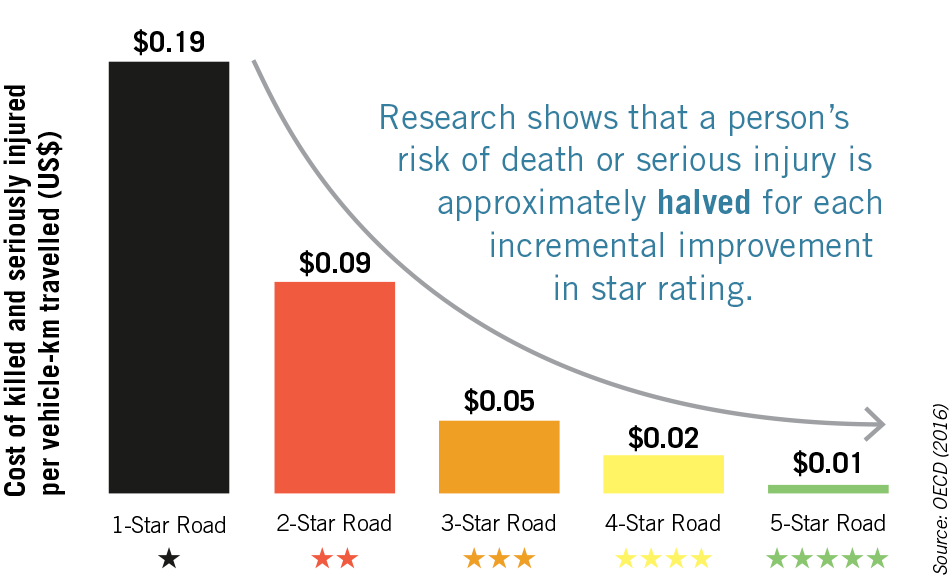
Broadly speaking, every extra star rating results in a halving of crash cost in terms of the number of people who are killed and seriously injured. Importantly, Star Ratings can be completed worldwide, in urban and rural areas and without reference to detailed crash data, which is often unavailable in low-income and middle-income countries, or is sparse in high-performing high-income countries striving for vision zero outcomes.
Ensuring that most travel is on 3-star or better roads for all road users by 2030 will save lives on a scale that matters.
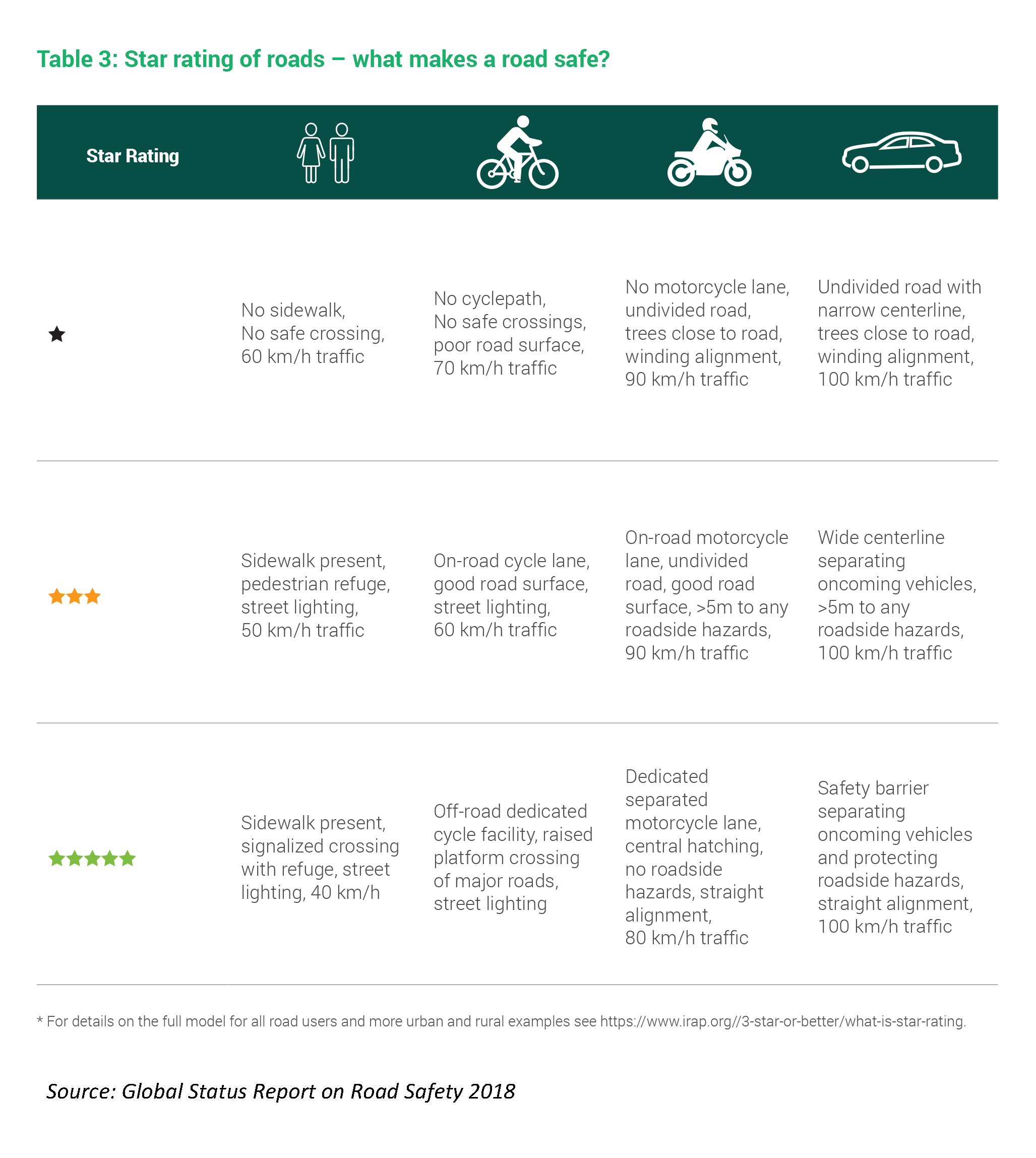
Many countries have made adopted policies, improved roads and certified Star Ratings of their roads, but much more work is needed to prevent deaths and debilitating injuries that occur every day. The following insights are based on a sample of data for more than 502,000km of roads across 84 countries. The data can be explored in more detail in the iRAP Safety Insights Explorer.
Star Ratings for roads worldwide
Star Ratings help to explain why road crashes remain a leading cause of death and injury worldwide; a large percentage of the travel on the roads assessed are in the highest risk 1- and 2-star categories, particularly for the most vulnerable road users, pedestrians, bicyclists and motorcyclists.
Click on image below to enlarge
* Sample of more than 502,000km of roads across 84 countries.
Speeds and road features
The data underlying the Star Ratings provides insights into how safety can be improved on the world’s roads. Deaths and serious injuries occur when speeds and design are incompatible. Head-on deaths and injuries occur on undivided roads. Run-off road deaths and injuries occur where the roadsides are unforgiving. Pedestrian deaths and injuries occur where sidewalks are missing and safe crossing isn’t possible. Bicycle deaths and injuries occur where there is no space for bicyclists and safe crossing isn’t possible.
Road features elevating this risk – Click on image below to enlarge
* Sample of more than 502,000km of roads across 84 countries.
Low, middle and high income countries
Low- and middle-income countries account for more than 90% of all road deaths despite having less than 60% of the world’s motor vehicles. Star Ratings help to explain why. Investment in safer roads and speeds will help all countries – but especially low- and middle-income countries – lift the Star Ratings of their roads and prevent millions of deaths and injuries.
Click on image below to enlarge
* Sample of more than 502,000km of roads across 84 countries.
Roads in analysis
These insights are based on a sample of more than 502,000 of roads across 84 countries. The data can be explored in more detail in the iRAP Safety Insights Explorer.
Roads included in insights:
